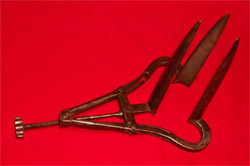| The vaginal speculum was
introduced to gynecology
in 1801 by Joseph Claude Recamier. His fist vaginal
speculum
was a slender tin tube five inches long he used to introduce treatment
for cervical ulcers. Later he widened this tin conical tube
to inspect the cervix. Some doctors considered the speculum
essential
for an adequate pelvic examination, while others regarded it as
unnecessary
and objectionable. " The use of the speculum was, for respectable
women,
a serious sacrifice of their delicacy." The vaginal speculum underwent
numerous modifications since Recamier's time. |
 |

|
The first generation vaginal
speculum was
a widened conical tube similar to the Ferguson silver speculum as shown
on the left photos.
Circa: Mid 1800
|
Protheroe-Smith's Speculum
Circa
1840
Hand engraved gynecologic speculum, Dr.
Protheroe Smith's /Speculum Uteri/ Ferguson Maker. Dr Protheroe
Smith was a prominent London Obstetrician and the founder of the
Hospital for Diseases of Women, Soho Square, 1842. He is also the
first physician to use chloroform in childbirth in England. The
instrument is of exhibition quality and may have been exhibited in the
London Exhbition of 1866. See Ricci pg 527-528.
|
| Speculum Metricis. An ancient
instrument similar
to those found at Pompeii, 1st Century BCE. See James V. Ricci,
M.D. illustrations page 38, and page 78. " The Development
Gynecological
Surgery and Instruments," 1990 Norman Publishing, San Francisco. |
Circa 16th Century.
A three pronged speculum came back
into use
in the 16th and 17th Century on the continental Europe. It was
used
to dilate the vagina to visualize the cervix. It may have been
utililized
to forcibly dilate the cervix to hasten labor. Unplated steel, 17 x 23
cm ( 7 1/2''x 9'') The prongs open 4cm (1 3/4'') at its greatest
diameter
at the tip. |
|
John Weis Speculum
Circa 1831
Checkered
ivory handle with screw mechanism that opens and closes the
blades. Three unplated steel blades with ebony obturator. |
|
John
Weis Speculum.
Circa
1831
Unplated
steel with ebony handle.
|
The First Generation Vaginal Speculum
|
Ferguson
Mirror Vaginal
Speculum
Circa 1850's
Mirror vaginal speculum
introduced by William
Ferguson. A tubular glass with mirrored interior and
outside
black coating: 14 cm. ( 5 1/2 "). E. Bennion p134. |
Ashton's
Fenestrated Speculum
Circa: 1850's
A tubular mirrored speculum with
opening along
one side and a closed end. 10 1/2 cm (4
1/4") Tiemann p431 Fig
3175. |
|
Ferguson
Vaginal Speculum
A cylindrical vaginal
speculum. Circa
1850s. Bakelite
outer, biege
inner lining. 13 cm (5 1/4")
|
Ferguson Wood Vaginal
Speculum
c 1850s
Short cylindrical wood Ferguson
vaginal speculum.
10 cm (4")
Long wood Ferguson speculum.
14 cm.
|
Pewter speculum
Metal
handle, ebony
obturator. 20.5 cm (8 1/4") in length.
|
Boxwood Vaginal
Speculum
With
brass handle,
complete with
obturator that has a metal shaft; a conic
shaped boxwood tip and a
knob handle.
19 cm (7 1/2")
|
Charriere
Trivalve Speculum
c 1850
A three bladed vaginal speculum
with an ebony
obturator, introduced in 1837. The instrument features a unique
hinged-tube
that is inserted as an almond-shaped oval and expands to a full circle
by pressing the two finger grips together. Made of unplated
German
silver with nickel-zinc alloy, a material used rarely for medical
instrument. |
Segala
Quadvalve Speculum
Circa Mid 1800's
Four bladed vaginal speculum with
ebony obturator
and metal shaft. Unplated steel. 19 cm (7 1/2") in
length.
Introduced by Paul Segala in the 1830s. |
Ivory Handled Four Bladed Speculum
|
Ivory Handled, Two Bladed Speculum
|
Tubular Shaped Two Bladed Speculum
|
|
Thomas-
Sims Speculum
Circa
1880
Ebony handle,
unplated steel blades
|
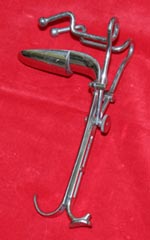
|
Guttman
Speculum
|
Philippe
Ricord Vaginal
Speculum
c 1834
Two
bladed unplated steel
speculum expanded at both ends around a fixed center. Has
checkered
ebony handles. 25.5 cm (10") |
 |
Four Bladed
Speculum with ebony
handle. 27 cm (10 3/4")
c Mid 1800s
|
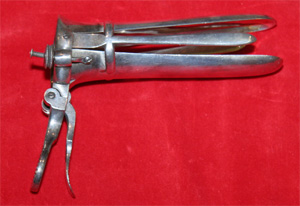
|
Four Bladed Silver
Plated Speculum
|

|
Tri-valve Speculum
with
crosscheckered ebony handles by
A.L. Hernstein,
N.Y.
c. 1870's
|
|
Three bladed vaginal
speculum.
A complicated
action, and a locking grip. Plated steel, marked I. Stevens & Sons
/ London, Circa 1870s. 20 cm (7 3/4") in length, blades open to 6 cm (2
1/4") wide. |
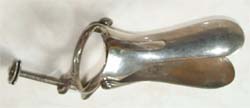
|
Brewer's
Circa 1895-1930
All metal bivalve speculum
|
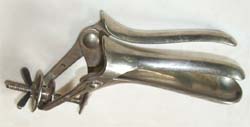
|
All Metal Trivalve Speculum
Circa Early 1900s
Gift from Dr. Eduardo Santiago
|
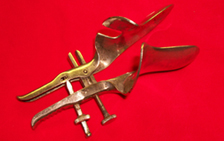
|
Mueller Speculum
|
All statements in this
web page
regarding date, age, and origin are statements of opinion. All
photos
and materials on this web page are protected by copyright laws.
Please
obtain direct permission from to
use any and all materials on this site, including photographs and
drawings. to
use any and all materials on this site, including photographs and
drawings.

Got Milk?
Circa: 1880
S. Maw's self suctioning breast
pump in original
box. Handblown glass pump, India rubber host and handblown glass
mouthpiece. |
 |
Clinical
Thermometer
Circa 1860
Clinical thermometer
was introduced in the mid 19th Century. This underarm bent
thermometer
is clumsy, heavy, and inaccurate. Its scale etched on an ivory
could
read only if in place. If removed before recording, the mercury
column
drops in the process. It was superior to the hand on the
forehead
method . The thermometer is 17.5 x 5 cm.
Glass and ivory in brown leather case.
|
Baunscheidt's
Lebenswecker
Circa 1880
Lebenswecker, a
German word for life awakener. A counter irritant
device.
The sharp needles in the tip of the instrument were dipped in a mixture
of menthol, camphor, turpentine, and vegetable oil. The head of
the
device was placed on the area of ailment. The toggle was drawn
back
to cock the spring then released driving the needles into the patient's
skin (ouch!), and presumably curing numerous illnesses. Seemed to
work, most patient never came back for a second treatment! The
hollow
ebony tube contained a handle with coiled spring attached.
Measures
27 x 3 cm.
|
All statements in
this web page
regarding date, age, and origin are statements of opinion. All
photos
and materials on this web page are protected by copyright laws.
Please
obtain direct permission from to
use any and all materials on this site, including photographs and
drawings. to
use any and all materials on this site, including photographs and
drawings.
|



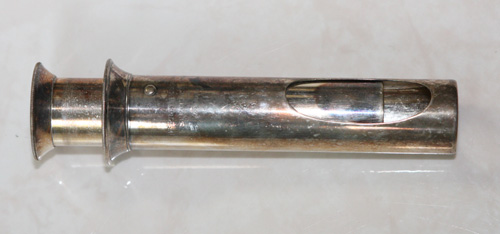
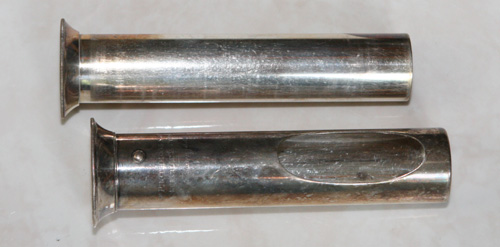
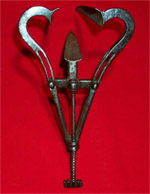
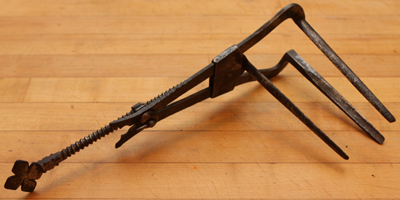
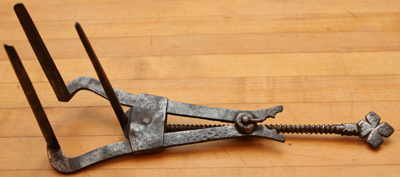
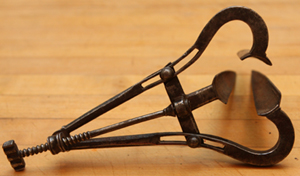
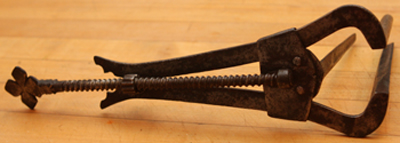
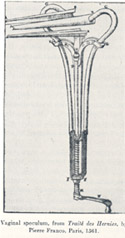
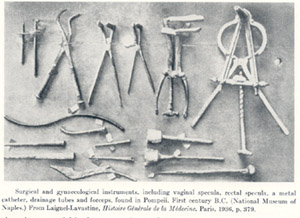

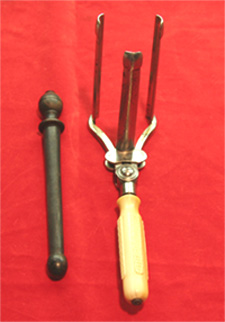

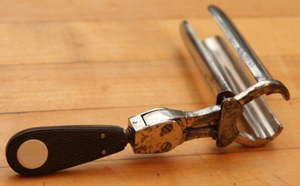
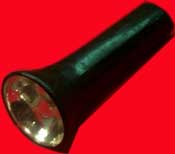


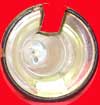

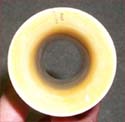
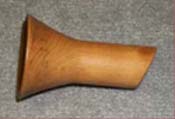

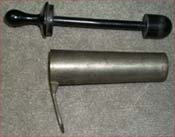


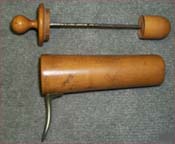

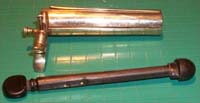
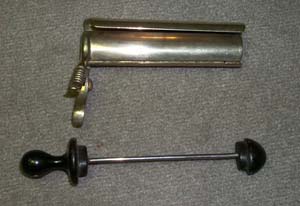
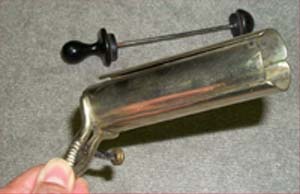
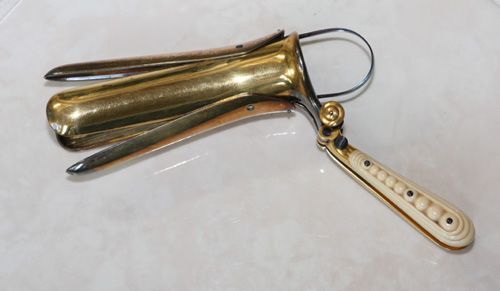
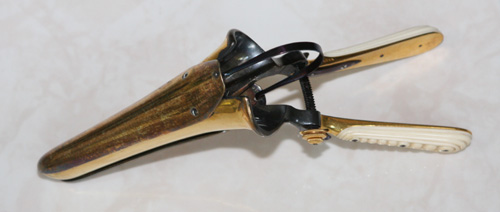
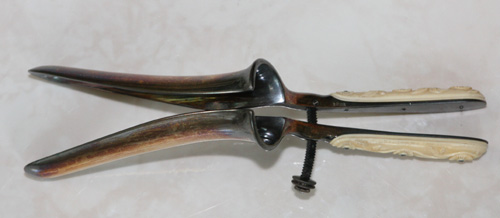
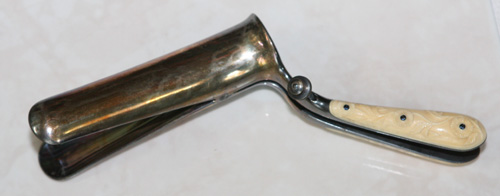
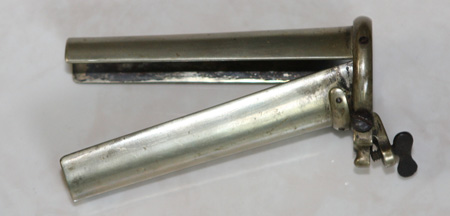
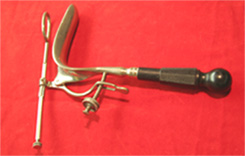


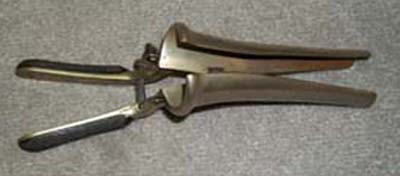
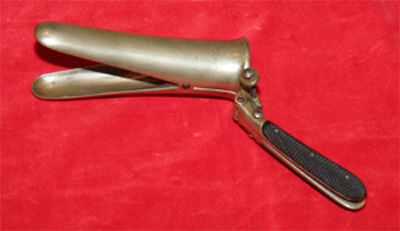
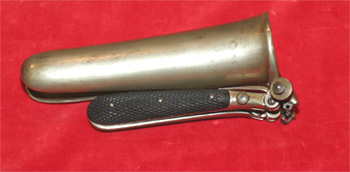








 to
use any and all materials on this site, including photographs and
drawings.
to
use any and all materials on this site, including photographs and
drawings.
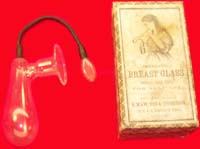
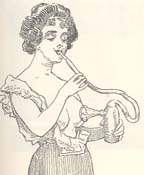

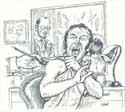

 to
use any and all materials on this site, including photographs and
drawings.
to
use any and all materials on this site, including photographs and
drawings.